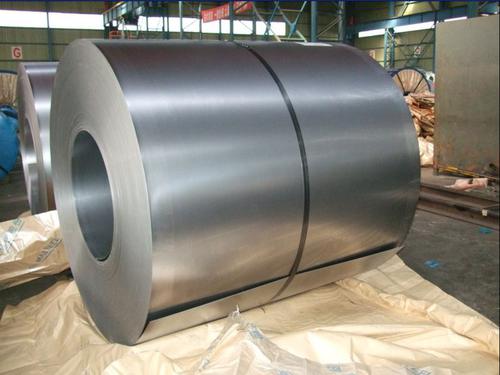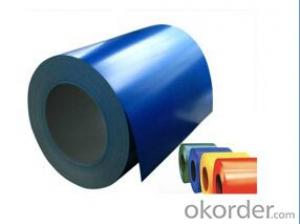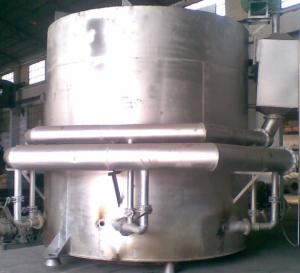Bright Anneal Cold Rolled Steel-EN10130 DC01-5
- Loading Port:
- Tianjin
- Payment Terms:
- TT OR LC
- Min Order Qty:
- -
- Supply Capability:
- 4000吨 m.t./month
OKorder Service Pledge
OKorder Financial Service
You Might Also Like
SPECIFICATION
1) Capacity: about10,000 ton per month for steel strip/tape product
2) Thickness: from 0.20mm to 3.5mm, all available.
3) Width: from 15mm to 600mm, all available.
4) Grade: Q195, SGCC, DX51D
5) Coil weight: from 50kg to 7000kg, all available.
6) Coil ID: 100mm - 508mm
7) Coil OD:500mm-1300mm
9) Tensile strength: 28.1-49.2kgf/mm2
10) Zinc coating weight: Min. 60g/m2, double side
11) Spangle: regular spangle, minimized spangle, zero spangle
12) Surface treatment: chemical passivating treatment, oils,passivating oils
13) Min trial order 5ton each thickness, 1 x 20' per delivery
14) Components: C%≤ 0.07, Si%≤0.03, Mn% ≤ 0.50, P% ≤ 0.025,S% ≤ 0.025, Alt% ≥ 0.02
It is the basedmaterial for galvanized steel coil and pre-painted galvanized steel coil. It iswidely used in light industry for making tank, furniture, pipe, refrigerators,washers, freezer plate, air conditioner, micro-wave oven, water heater,soot-such machine, electric rice cooker, electric roaster oven, dryers andautomobile etc. In the other application industries, it’s mainly used forenameling, office furniture, burglarproof door, electronic element, fastenerbattery, hardware, automotive fitting etc.
Eye to sky package: Anti-damp paper inside fullwrapped with plastic film, iron sheet outside on wooden pallet in 20 feetcontainer with 25mt.
- Q: How are steel coils used in the production of steel rings?
- Steel coils are used in the production of steel rings by being shaped and cut into the desired dimensions. The coils are unrolled and passed through a series of machines that shape the steel into a circular shape. The steel is then cut to the required size and welded together to form the steel rings.
- Q: How are steel coils used in the production of gutters and downspouts?
- Steel coils are used in the production of gutters and downspouts as they are uncoiled and fed into a roll-forming machine. This machine shapes and cuts the steel into the desired gutter or downspout profiles. The steel coils provide the necessary raw material for creating durable and long-lasting gutters and downspouts that effectively channel rainwater away from buildings.
- Q: What is the role of steel coils in the manufacturing of agricultural machinery?
- Steel coils play a crucial role in the manufacturing of agricultural machinery as they are used to fabricate various components and parts such as frames, chassis, blades, and implements. The high strength and durability of steel make it an ideal material for withstanding the harsh conditions and heavy-duty applications that agricultural machinery often faces. Additionally, the versatility of steel coils allows manufacturers to customize and shape them into different forms and sizes, ensuring the production of reliable and efficient agricultural machinery.
- Q: I am buying my boyfriend a steel guitar for our one year anniversary and I was curious what brand or company I should look into. I want something high quality yet traditional. Money is not really an issue but I don't exactly want to spend an arm and a leg either.Thank you in advance!
- Pedal steel or lap steel? Or do you perhaps mean a steel-STRING guitar, or a steel-bodied resonator guitar? Might help weed out irrelevant replies if you were to clarify.
- Q: Do any tour players use steel shafted woods? And are there any real advantages to having steel shafted woods? I have only played with one person to use steel shafted woods, he tells me thats because he cant hit it straight with graphite, however he is a very short hitter.
- Steel Shaft Vs Graphite
- Q: i wanna know all the similarities between iron and steel
- Steel is an iron alloy which contains between 0.2 percent and 2.0% carbon. Modern steels nearly always contain 0.5% - 1% manganese as well. (though technically the manganese doesn't need to be present for it to be considered steel.) Above 2.1% is usually called cast iron. Cast iron is brittle, but has a lower melting point than steel. Below 0.2% percent carbon is considered commercially pure iron. Pure iron is soft and malleable like copper, but it has low strength. Adding small amounts of carbon increases it's strength dramatically.
- Q: What are the main factors that affect the paint adhesion on steel coils?
- The main factors that affect paint adhesion on steel coils are surface cleanliness, surface roughness, presence of contaminants, proper surface preparation, and the type of paint or coating being used.
- Q: How are steel coils inspected for surface defects after processing?
- Steel coils are inspected for surface defects after processing through visual inspection, magnetic particle inspection, or ultrasonic testing. Visual inspection involves examining the surface for any visible defects such as scratches, dents, or corrosion. Magnetic particle inspection uses magnetic fields and iron particles to detect surface cracks or defects that may not be visible to the naked eye. Ultrasonic testing involves using high-frequency sound waves to detect internal and surface defects in the steel coils. These inspection methods help ensure the quality and integrity of the steel coils before they are further processed or delivered to customers.
- Q: In the warehouse management system of steel coil
- The warehouse is set to be required under the factories and production equipment and manpower planning, reasonable layout; to strengthen the internal economic responsibility system, scientific division, forming material export management assurance system; the service must implement the work quality standard > standardization, application of modern management technology and the ABC classification method, and constantly improve the level of warehouse management.
- Q: Are steel coils corrosion-resistant?
- Yes, steel coils can be made corrosion-resistant through various methods such as galvanization or coating them with protective layers.
Send your message to us
Bright Anneal Cold Rolled Steel-EN10130 DC01-5
- Loading Port:
- Tianjin
- Payment Terms:
- TT OR LC
- Min Order Qty:
- -
- Supply Capability:
- 4000吨 m.t./month
OKorder Service Pledge
OKorder Financial Service
Similar products
Hot products
Hot Searches
Related keywords




























